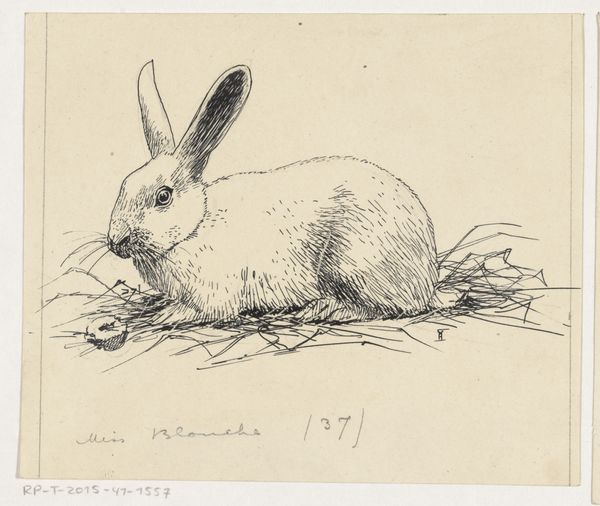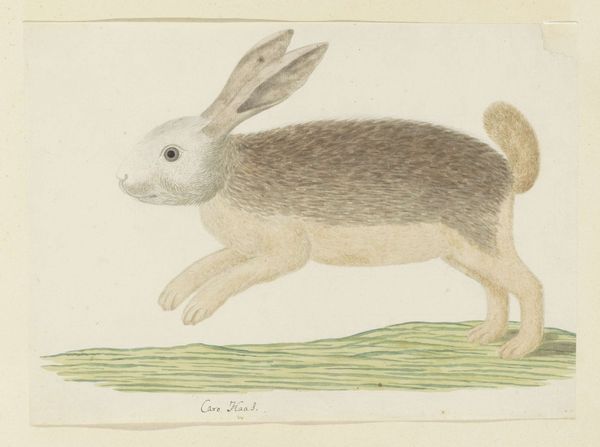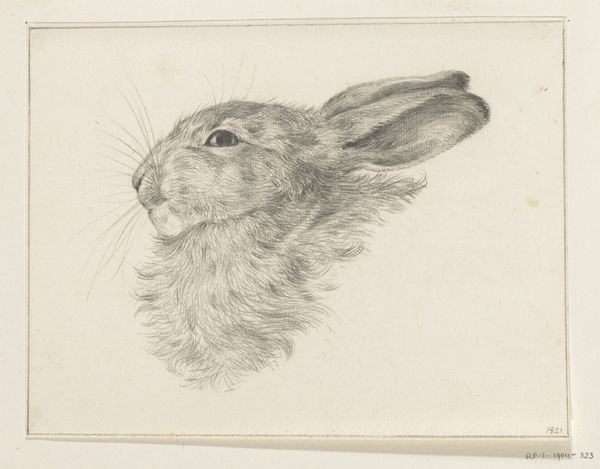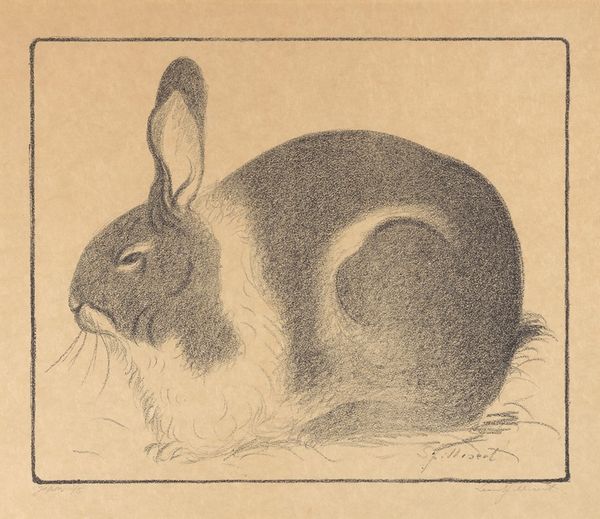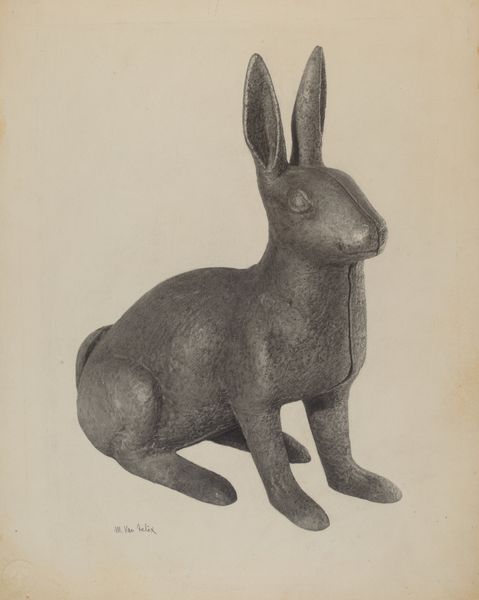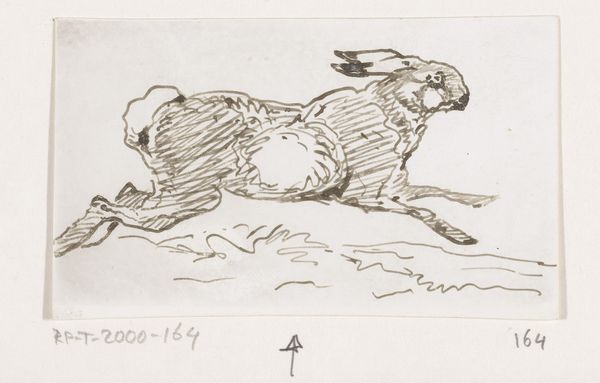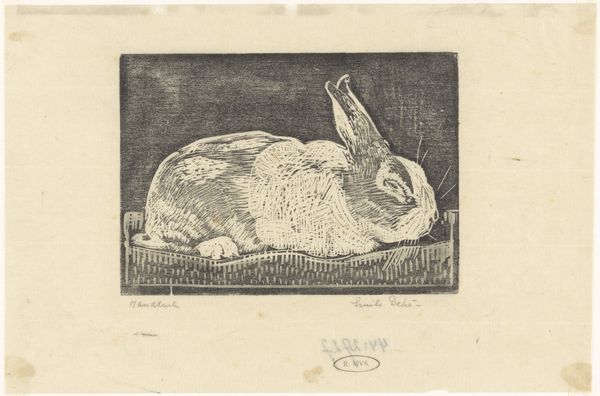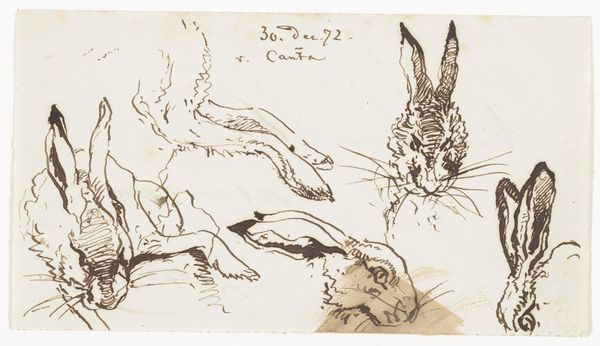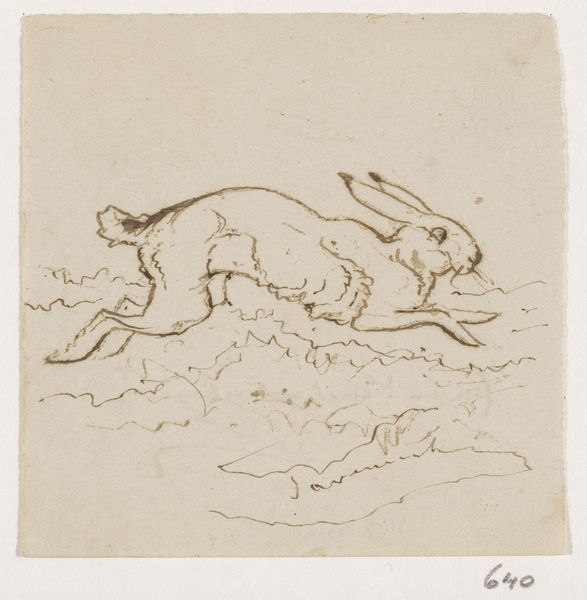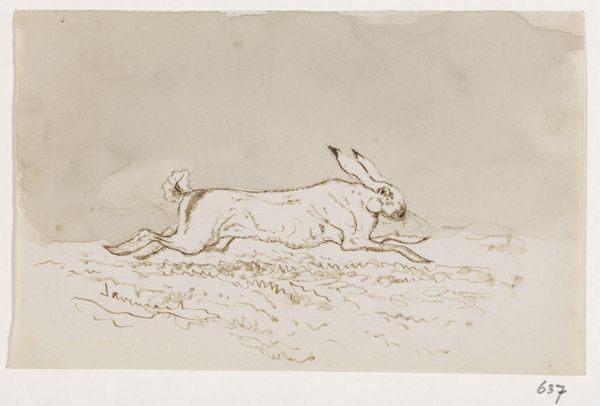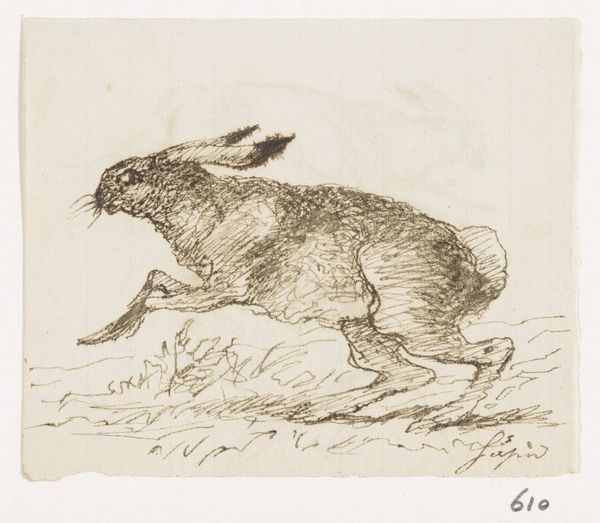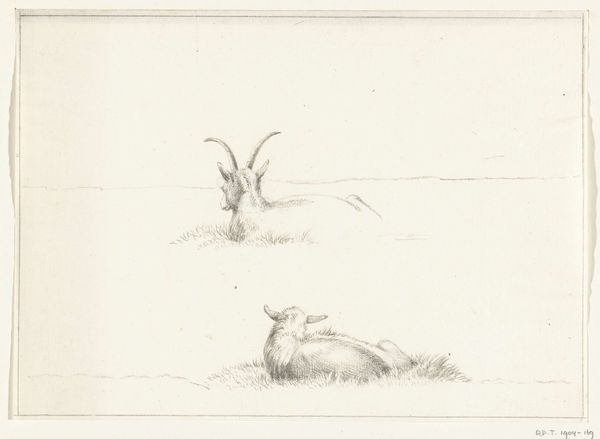
drawing, paper, pencil
#
drawing
#
amateur sketch
#
light pencil work
#
quirky sketch
#
pencil sketch
#
landscape
#
paper
#
personal sketchbook
#
idea generation sketch
#
sketch
#
pencil
#
sketchbook drawing
#
pencil work
#
sketchbook art
#
realism
#
initial sketch
Dimensions: height 660 mm, width 480 mm, height 189 mm, width 309 mm, height mm, width mm
Copyright: Rijks Museum: Open Domain
Curator: Our attention is drawn to this unassuming sketch, *Lepus saxatilis (?)*, likely rendered between 1777 and 1786 by Robert Jacob Gordon. The medium is humble: pencil on paper. Editor: There's a certain stillness to it. The muted tones and delicate lines give the impression of capturing a quiet, reflective moment. Curator: Absolutely. Gordon was a military man, explorer, and naturalist. His drawings were observational, a product of his extensive travels and documentation of the Cape. Note the annotations surrounding the hare, indicating his attention to detail. Editor: Indeed, it reads as part scientific record, part artistic study. The materiality speaks of accessibility and the field: pencil and paper, tools of both artist and explorer. It raises questions of class and representation too—the accessibility of sketching versus, say, commissioned oil paintings. Curator: It speaks volumes about the networks of patronage at play during the Dutch Cape Colony period, and Gordon's own complex position within the colonial structure as someone both benefitting from it, but also documenting the environment through his explorations. Consider what the drawing implies about relationships of power— between the artist and subject, colonizer and the environment, Europe and Africa? Editor: I see the point; the drawing becomes more than a portrait. It embodies labor— Gordon's, of course, the work of making. I am very interested in the labor required to generate such drawings for record-keeping. Also, the paper itself as commodity is intriguing. How were these materials gathered and distributed, enabling the recording of what came to be known as the colony's environment and animals? Curator: Precisely. Its unassuming nature belies deeper social and political forces at work. It reminds us that even simple sketches are enmeshed in systems of power and knowledge production. Editor: So true, even through a quickly drawn image, layers of materiality, labor, and consumption open up under scrutiny. Curator: Looking at this drawing gives insights on the creation of nature as document and artwork, a reflection on social structures of the Dutch colony, during the 18th century. Editor: Right, what initially appears as just an everyday animal is very revealing through his work methods and context.
Comments
No comments
Be the first to comment and join the conversation on the ultimate creative platform.
